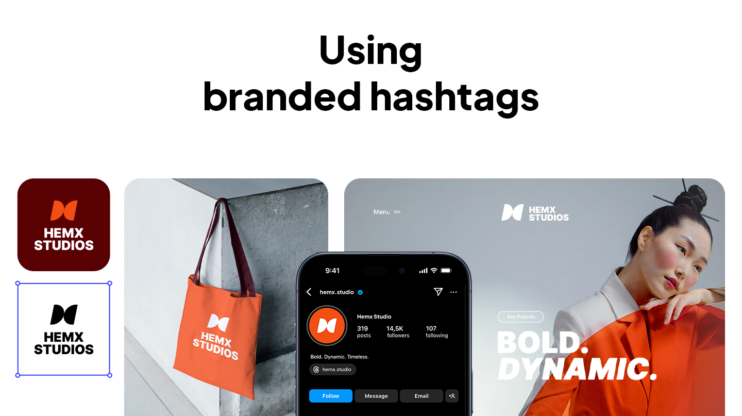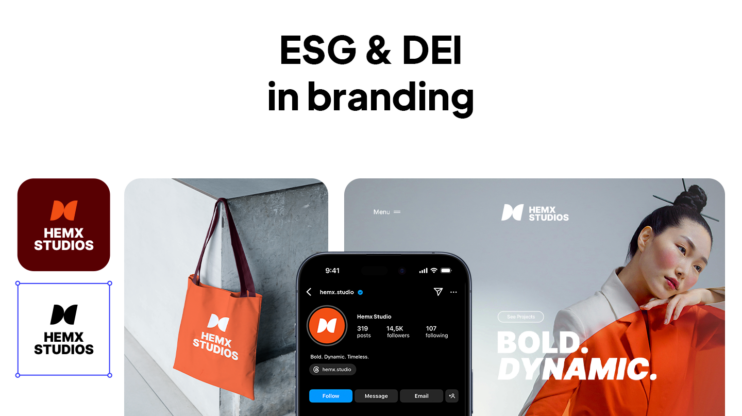Surveys show that 86% of customers trust brands due to their genuine storytelling. Օn social media, real, authentic, creative brand stories bring in high engagement rates. Videos take up most of the content on social media, which means scripting authentic brand story videos will get the click and convert the interest.
Authenticity comes from clear, relatable human experiences and a script that aligns with the short attention spans on social media. Want it or not, you should adapt your brand’s social media strategy to what people click on and stick with. Today, we’ll cover a six-step formula for creating videos that resonate deeply, fit into tight timelines, and naturally encourage your viewers to act.
What is authentic brand storytelling? (+ why it wins)
Having an authentic brand storytelling means being honest, truthful, and vulnerable with your audience. As a result, it creates connections and a sense of belonging between you and the people following you.
“Creating short brand story videos that feel real comes from clarity, rather than hours of perfecting a copy. Choose one moment your team is proud of, even if it’s small. Make it visual, use real words, and talk like a human. Connect with people and they will start to care.” – Sona Mamyan, Head of Growth at 10Web
The brand story becomes authentic the moment a founder shares the imperfect beginnings, a customer talks about how your product changed their day, or your team laughs through a behind-the-scenes fail. Real stories, told with heart, not refinement.
Here’s why an authentic brand story works:
- 86% of consumers say authenticity is a top factor in choosing brands they support.
- User-generated content is seen as 2.4x more authentic than brand-created content according to the studies by Stackla.
- Psychologically speaking, narratives are better remembered than other content forms.
In short? Authentic stories convert. Because people don’t buy brands. They buy into what those brands stand for.
6 practical ways to script an authentic, short brand-story video for social media
So, how do you take your brand’s heart and squeeze it into 30-60 seconds of video that feels real? The thing is, authentic brand story scripting isn’t a one-off performance, but rather a mindset you bring to every video script. It can be creating a behind-the-scenes reel, a founder voiceover, or a quick customer moment. The challenge is always the same: how do you infuse your brand’s soul into short-form content without sounding fake? Here is the 6-step checklist you can take.
1. Clarify your brand truth & audience desire
Before you start video scripting, ask yourself: What does my brand stand for and why should anyone care? It’s about identifying one core truth that sits at the intersection of what you believe and what your audience wants to believe, too.
Here is a prompt you can steal: “We believe [core truth] because [real-world reason your audience connects to it].”
Let’s say, you are a sustainable skincare brand. For you, it can be: “We believe your skin deserves care that doesn’t harm the planet – because beauty shouldn’t come at Earth’s expense.”
Now, distill that into one clear, jargon-free sentence. That sentence becomes your direction. Every character, cut, and caption in your video should orbit around it. Because if your story isn’t grounded in a truth your audience already feels in their gut, no amount of cinematic editing will make it resonate.
Need help putting that core belief into words? Try the 10Web Slogan Generator – it’s a free AI tool that can help you explore different ways to express your brand clearly and creatively.
2. Choose a human-centered hero
Behind every successful brand that people love are its people. That’s why if you want to have an authentic brand story that people connect with, choose a human-centered hero. It can be your founder, your most passionate customer, or the warehouse manager who keeps the whole operation running. The trick is: don’t tell the story as the brand. Tell it through someone living it.
It works, because faces grab attention. Emotions create empathy. A real person with a relatable moment beats a shiny product shot every time.
Your authentic brand scripting can include:
- A founder sharing the moment they almost gave up – but didn’t.
- A customer explaining how your product solved a very real, very specific problem.
- An employee showing what it looks like behind the scenes.
Doing this in branded video scripting, you make the human-centered hero the heartbeat, and your brand the “helper.”
When we talk authenticity, viewers don’t expect perfection. Give them a person to root for, and suddenly your story becomes something they’ll remember and share.
3․ Map a Mini Three-Act structure
Having a specific structure that you follow for your videos will accelerate the video-making process and give you more time for authentic brand story scripting. You don’t need a Hollywood budget or a screenwriting degree. You just need to borrow a time-tested formula and compress it into a social-friendly format – ideally 15 to 60 seconds. That’s where the Micro Three-Act Structure comes in.
Let’s look at it in action:
Act 1: Setup: Start with a hook that introduces a relatable problem, desire, or moment of tension. For instance, “I used to spend hours editing content that barely performed…”
Act 2: Tension: Now focus on the struggle, insight, or unexpected twist. This is where you build a little emotional friction – curiosity, frustration, aha moments. Something like, “…I tried every tool out there, but nothing saved me time until I found this one.” will work.
Act 3: Resolution: Reveal your brand’s role – not as a savior, but as a solution. What changed? What’s better now? Make sure there’s a payoff. Something in these lines, “Now I create better content in half the time. I finally have my evenings back.”
With just three beats, you’ve taken your viewer on a mini-journey. It’s storytelling stripped down to its most powerful form.
4. Include tangible, sensory details
Want to make your video unforgettable? Tell a story feels lived-in rather than scripted. Make people experience it in feelings, not words.
Skip the generic voiceovers. Instead, pull in the sensory stuff – raw dialogue, ambient sounds, the clink of coffee cups, the hum of a studio light, a laugh between takes.
Let the viewer feel like they’re in the room. That’s what makes a brand story stick.
5. Validate with a feedback loop
Before you go to production, pause. Even the most heartfelt script can miss the mark if it only lives in your head (or your team’s Slack thread). That’s where a quick feedback loop is necessary.
- Run a table-read of your script – out loud, with a small test group. Better yet, record a rough voiceover and pair it with basic visuals or a storyboard.
- Share it with a few people who match your target audience, not just your team. Ask them:
- Does this feel real to you?
- What part grabbed you most or fell flat?
- Would you keep watching?
What you’re listening for:
- Emotional reactions, not marketing feedback.
- Confusion, cringes, or points where they mentally check out.
- Natural questions they ask after watching (which hint at gaps or hooks).
If you’re short on time, test different hooks or endings using Instagram Stories polls, LinkedIn carousels, or TikTok drafts with trusted creators.
6. Optimize for platform rhythms
Planning to distribute the story to different channels? Let’s make sure it lands. Because the same script won’t perform the same way across TikTok, Instagram Reels, and YouTube Shorts – even if the message is clear. Each platform has its own rhythm, and your video needs to move to its beat.
How to adapt smartly?
- Hook fast, really fast: You’ve got 3 seconds (already less) to earn attention. Start with motion, a bold visual, or a spoken line that raises curiosity. Think: “I was about to quit my job when this happened…”
- Adapt the format to the platform:
- TikTok: Looser, rawer. Voiceovers and on-screen text play well.
- Reels: Aesthetic matters more. Rely on transitions, trending audio, and clean visuals.
- Shorts: Informational and story-driven content wins. Add tight editing and punchy pacing.
- Captions are non-negotiable: Over 80% of users watch without sound. Use readable captions to highlight key lines – not just as subtitles, but as part of the visual rhythm.
- Use platform-native sounds: Trending audio can boost discoverability, but use it strategically.
Pro tip: Create one “core” script, then adapt just the first few seconds, audio choices, and visual pacing to each platform. That way, you stay consistent and relevant.
Script your authentic brand story easily
Authentic brand story scripting is work you need to invest in and distribute to all your social media channels. Authentic brand story scripting helps you build a repeatable rhythm where your brand shows up as human, honest, and relatable. You can do it through the founder’s voiceover or a raw customer win, the important thing being to keep it genuine.
Social platforms move fast, but trust builds slowly. The fastest way to earn it is real stories.
So next time you sit down to script, don’t ask: What should we say? Ask: What’s the truest thing we can share and how can we show it in 30 seconds or less?
FAQ
How to write a story for your brand?
What makes a brand story authentic?
What are key elements of a strong brand story?
How do I test if my brand story resonates?
Can I use a template for brand storytelling?
How do I script an authentic brand story video for social media?
What elements make a brand story feel genuinely authentic instead of sales-y?
How do I adapt the same brand story for different audience segments or marketing channels?
What’s the easiest way to collect real customer clips or quotes for my video?








